Содержание
Когда первые покупатели в России начали получать свои OnePlus 11, главной темой для обсуждения стали не фишки или недостатки телефона, а угроза отключения функции звонков, которую он выводил на экран и которую вскоре начал реализовывать. Смартфон, с которого нельзя звонить, не особо интересен вне зависимости от других параметров, однако сегодня мы немного отвлечёмся от этой проблемы. У нас на тесте глобальный OnePlus 11, с него можно звонить, и вопрос дня — стоит ли вам звонить именно с него.
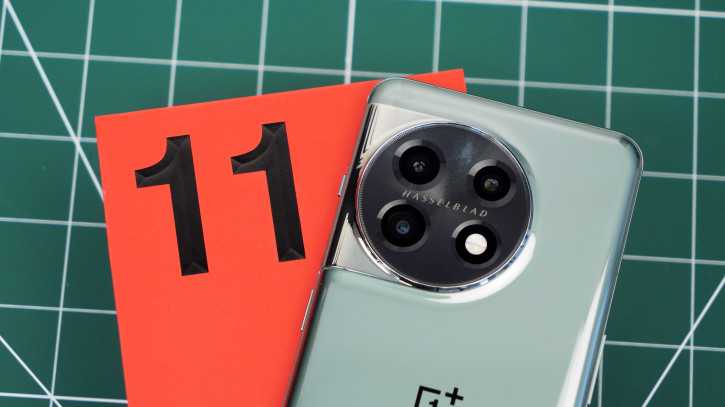
| Технические характеристики OnePlus 11 | |||
|---|---|---|---|
| Сеть | 2G, 3G, 4G (Band 1, 3, 7, 20), 5G | ||
| Прошивка | СolorOS 13 на Android 13 | ||
| Экран | 6,7″, 20,1:9, 3216 x 1440 точек, 525ppi, 1-120 Гц (LTPO 3.0), 5 000 000-12 000 000:1, 500/800нит (мин), 1300нит (пик), Dolby Vision, HDR10+, AMOLED E4 | ||
| Чипсет | Qualcomm Snapdragon 8 Gen 2CPU: 8 ядер, 4 нм, Cortex-X3 до 3,2 ГГц + 2 х Cortex-A715 до 2,8 ГГц + 2 х Cortex-A710 до 2,8 ГГц + 3 х Cortex-A510 до 2 ГГцGPU: Adreno 740 | ||
| ОЗУ | 12 ГБLPDDR5X | 16 ГБLPDDR5X | |
| ПЗУ | 256 ГБUFS 4.0 | 256 ГБUFS 4.0 | 512 ГБUFS 4.0 |
| SIM и карта памяти | Две nanoSIM-карты | ||
| Камера | Тройная, AI, HDR, Hasselblad, запись видео 8К@24fps, 4K@60/30fps, 1080p@60/30fps, 720р@60/30fps, сло-мо 1080р@240fps, 720p@480/240fpsОсновная: 50 Мп, Sony IMX890, 1/1,56″, f/1.8, 1 мкм, угол захвата 84 градуса, 6 линз, автофокус, OISШирокоугольная: 48 Мп, Sony IMX581, 1/2″, f/2.2, 0,8 мкм, угол захвата 115 градусов, автофокус (макро 3,5 см), 6 линзТелефото: 32 Мп, Sony IMX709, 1/2,74″, f/2.0, угол захвата 49 градусов, автофокус, оптический зум 2х, цифровой зум 20х, 6 линз, OIS | ||
| Селфи | В отверстии слева, 16 Мп, f/2.4, угол захвата 82 градуса, фиксированный фокус, 5 линз, запись видео 1080р/720p@30fps | ||
| Батарея | 5000 мАч | ||
| Зарядка | USB-C (версия 2.0), 100 Вт | ||
| Беспроводные интерфейсы | Wi-Fi 802.11 a/b/g/n/ac/ax, 2,4/5/6 ГГцBluetooth 5.3GPS, A-GPS, Galileo, ГЛОНАСС, Beidou | ||
| NFC | Есть | ||
| Биометрия | Сканер отпечатка пальца в экранеРаспознавание лица | ||
| Звук | Стереодинамики, Dolby Atmos, LDAC | ||
| Водозащита | IP54 | ||
| Размеры и вес | 163,1 х 74,1 х 8,53 мм205 г |
The OnePlus 11 has an even bigger display screen
The display screen dimension of a cellphone is among the most essential issues nowadays. Those that like watching video might want the largest show attainable, whereas these with small arms could desire a dinkier providing.
Should you do desire a huge cellphone display screen, then the OnePlus 11 could also be your only option, with the AMOLED show coming in at 6.7 inches with a 3216 x 1440 decision and 120Hz refresh charge.
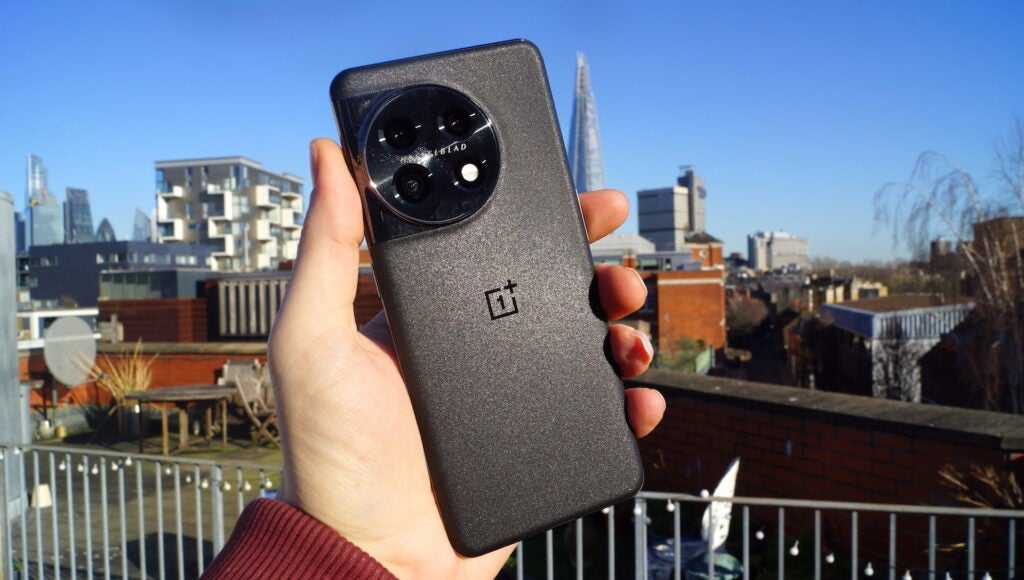
OnePlus 11 – Picture Credit score (eListiX)
In the meantime, the Xiaomi 13 has a 6.36-inch AMOLED display screen, with a 2400 x 1080 decision and 120Hz refresh charge. That’s not fairly as huge because the OnePlus, however ought to nonetheless be massive sufficient for many.
OnePlus 11 vs Xiaomi 13 Ultra: Battery
There is a 5,000mAh battery inside both of these phones. Their battery life is not the same, however. Both offer great battery life, but the OnePlus 11 is in a league of its own. Well, the Galaxy S23 Ultra and OnePlus 11 are, kind of. In any case, we were able to get around 8 hours of screen-on-time from the Xiaomi 13 Ultra. Well, a bit more on that, on average. The OnePlus 11 did not have problems going over 10 hours of screen-on-time for us, actually.
One thing to note is that we’re talking about battery life without the gaming aspect. When we included gaming into the equation, the results were different. Both of these phones do have great battery life, but do note that you may get different results. You’ll use different apps, have different usage habits, and also different signal strengths. So… do note that into account. Our numbers do not have to reflect what you’ll get out of these two phones.
The OnePlus 11 supports 100W wired (80W in the US) charging, while it does not offer wireless charging support. The Xiaomi 13 Ultra supports 90W wired, 50W wireless, and 10W reverse wireless charging. Both smartphones do come with chargers in the box, though, which is something we cannot say for Apple, Samsung, and Google phones. They will recharge really fast, needless to say.
Displays and software
- Xiaomi: 6.73-inch LTPO AMOLED — 1440 x 3200 resolution — 522ppi
- OnePlus: 6.7-inch LTPO AMOLED — 1440 x 3216 resolution — 525ppi
- Xiaomi: 120Hz adaptive refresh — 1900 nits peak — Dolby Vision/HDR10+
- OnePlus: 120Hz adaptive refresh — 1300 nits peak — Dolby Vision/HDR10+
- Xiaomi: MIUI 14 based on Android 13
- OnePlus: OxygenOS 13 based on Android 13
Moving on to displays, it’s safe to say both companies were keen to equip their phones with the best panels available. Both are large, 6.7-inch displays; technically Xiaomi is 6.73-inches, so it’s slightly bigger. Regardless, they’re similar, offering 120Hz refresh rates that can adapt efficiently between 1hz and 120Hz. They’re also both QuadHD resolution — although you do have to enable that in the settings. It means they’re both really crisp and detailed displays.
They’re both really bright too, although Xiaomi does trump the OnePlus here, with its peak 1900 nits of brightness being able to hit higher peaks than the 1300 nits on the OnePlus. Most of the time you won’t notice this until you’re outside in bright daylight, which has been a little limited here in the UK recently. Crank them up to full brightness, and you can definitely see the extra light coming from the Xiaomi.
In their default vivid settings, the Xiaomi 13 Pro also seems to balance colours a little better and doesn’t push the oranges and reds as hard as the OnePlus display. However, both phones do let you customise the colour temperature and profile to suit you.
Now we have to mention software, if only briefly because it does make a difference to the usability of the devices, and in some ways impacts the experience quite negatively — at least when using the Xiaomi.
MIUI 14 on the 13 Pro requires a lot of taming to make it less frustrating and more intuitive. It constantly tries to force you to use its wallpaper carousel feature on the lock screen, even putting a shortcut to the button on the lock screen and constantly pestering you with notifications to switch it on.
If you want to change your notification sounds or ringtones, or even select a new wallpaper, Xiaomi forces you into its Theme Store, rather than just giving you a simple menu to choose from some pre-installed options. It’s a real pain when you want to change the look or sound quickly, as is the split control centre and notification set-up when you first use it. You can bring back an older style view where quick settings and notifications come down with the same swipe, but it’s not the default. What’s more, Xiaomi doesn’t make use of the Android ability to match system accents to your wallpaper.
OnePlus’ approach is very different. It’s lightweight, customisable, bloat-free, and just makes more sense. If we had to choose based purely on the software experience, it’s an easy decision.
Производительность и тесты
OnePlus 11 основан на главном флагманском чипсете 2023 года — Qualcomm Snapdragon 8 Gen 2. И реализован он тут так себе. В стресс-тесте 3DMark Wild Life, вне зависимости от выбранного режима производительности, через 5-10 минут после начла испытания производительность резко падает, на минимуме опускаясь к отметке 4500 очков. Это уровень хороших реализаций Snapdragon 870! В CPU Throttling Test в процентах падение не такое впечатляющее, да и держится он подольше, но на минимуме чип тоже превращается в 870. 320 гипсов — это его уровень.
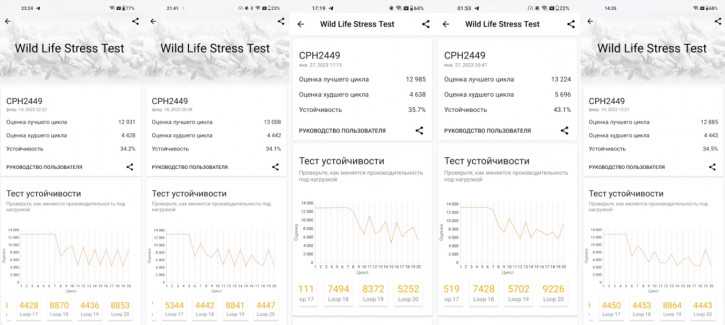
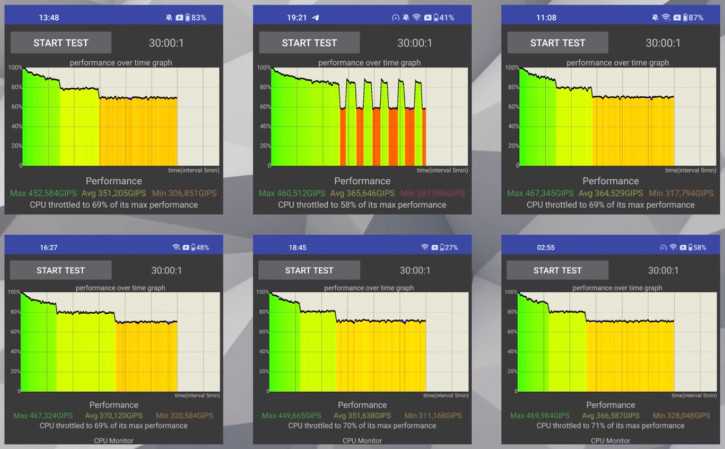
А как ситуация в играх? Противоречиво, скажу я вам. Потому что на одной чаше весов есть Genshin Impact, а на другой – все остальные игры. И если вы думаете, что OnePlus 11 тянет всё, кроме Genshin Impact, то вы ошибаетесь. По щучьему велению в Genshin Impact заблокирован троттлинг, поэтому игра идёт отлично, нагревая телефон до 53 градусов. А в других играх – ничего подобного, корпус греется минимально, зато случаются падения производительности и даже частоты экрана, причём до странной отсечки в 50 fps.
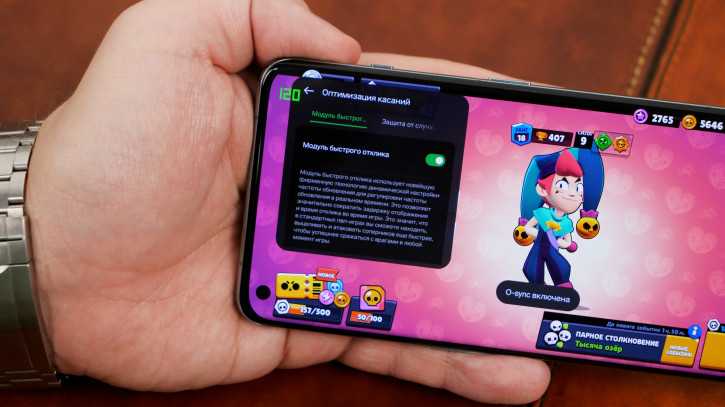
Ну то есть у производителя флагманского смартфона есть три пути. Либо поставить какое-то лютое охлаждение (типа вентиляторов в Red Magic и Legion), либо позволить смартфону греться, либо задушить его троттлингом ради минимизации нагрева и негативного воздействия температур на компоненты. OnePlus отринула первый вариант, реализовав остальные два — один в Genshin Impact (и, возможно, ещё нескольких играх), другой во всех остальных сценариях. Странное решение. Стерео, хорошее вибро, экран 120 Гц и тач 240 Гц улучшают игровой опыт.
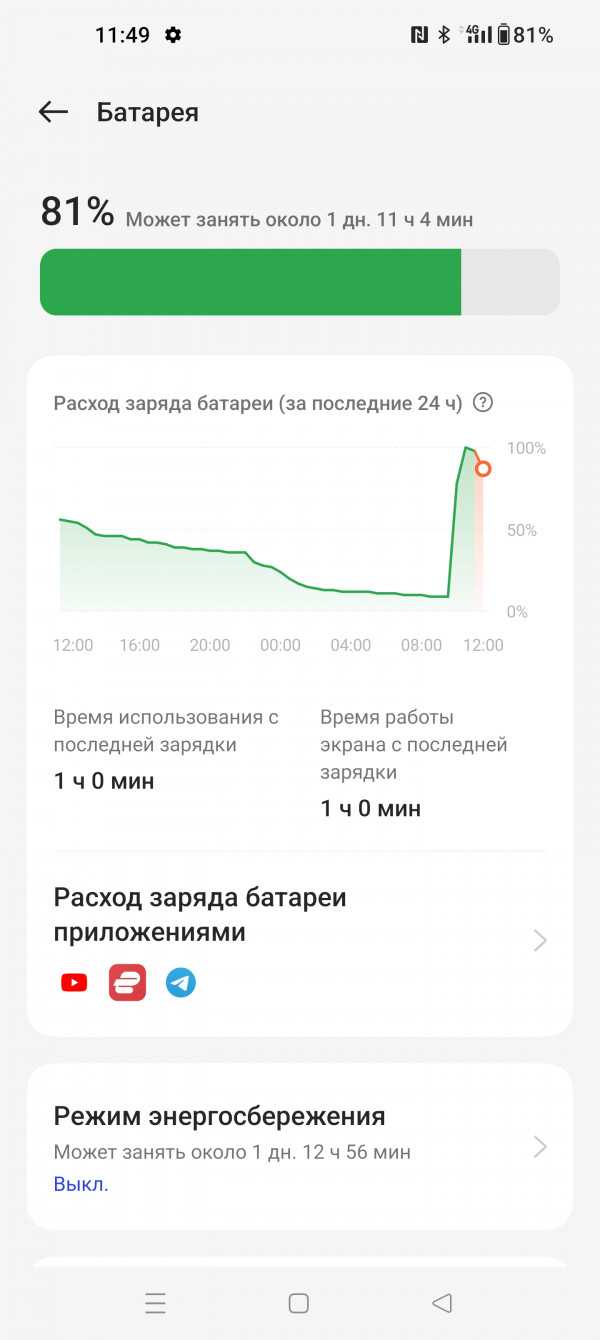
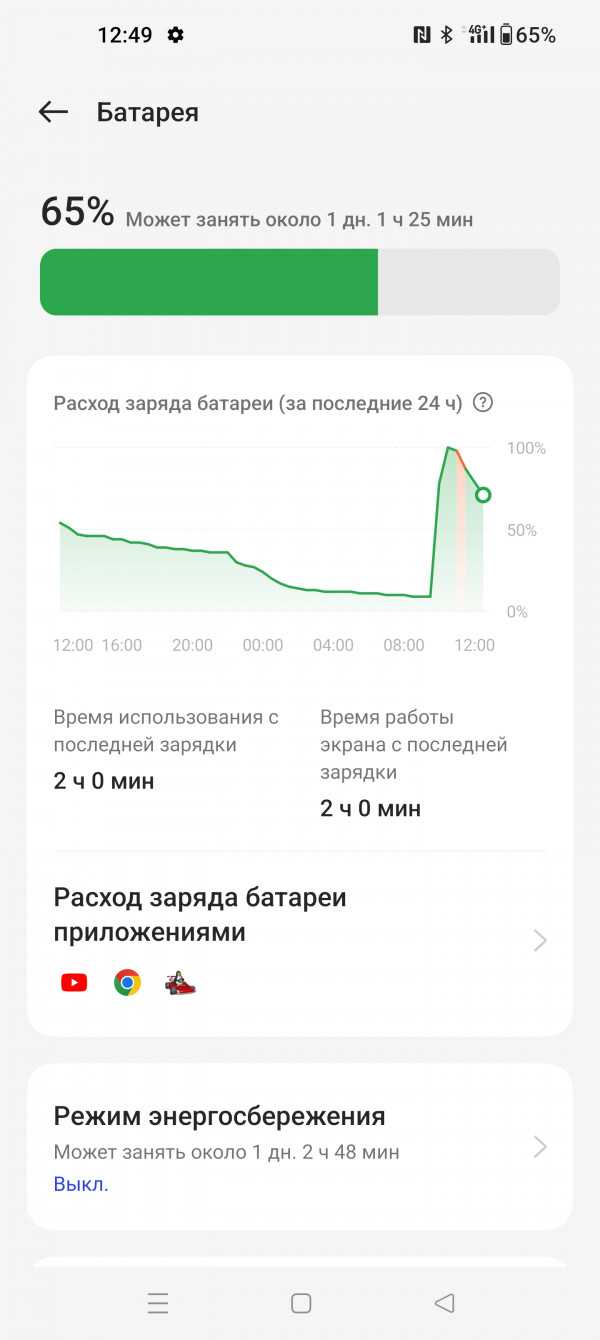
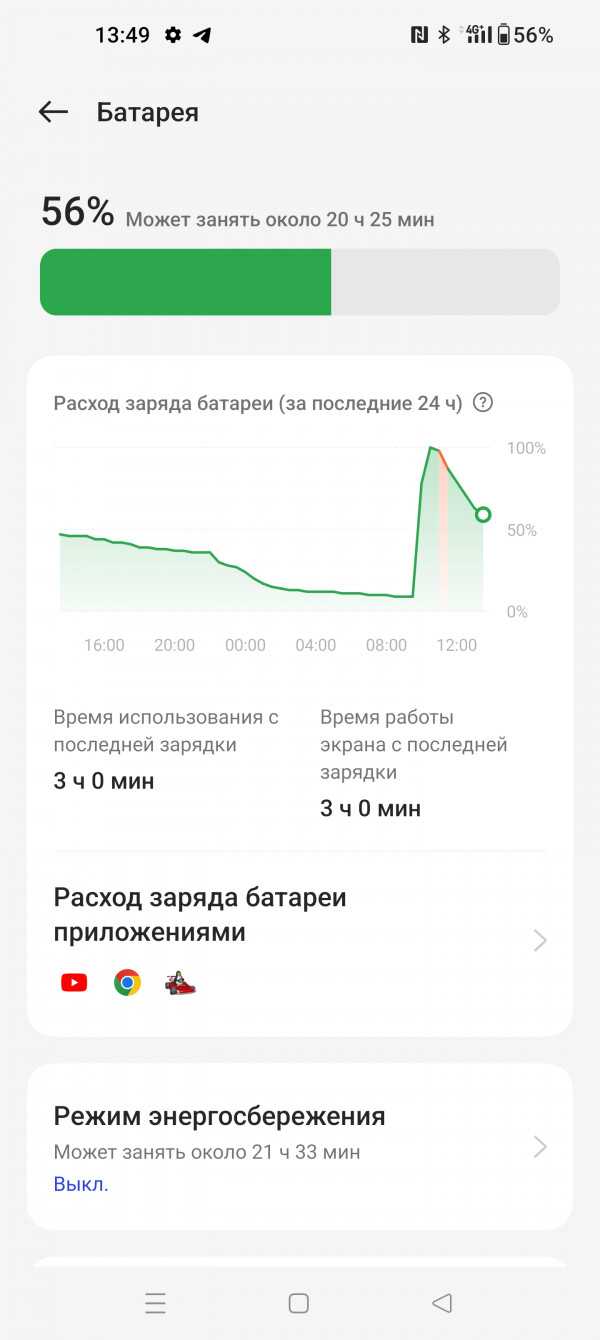
Ёмкость аккумулятора стандартная: 5000 мАч. Вот какие цифры по автономности мы получили в ходе тестирования (стандартный режим производительности, максимальная яркость, звук выключен, QHD+, высокая частота обновления): 19% за час в игре SuperTuxKart, 16% за час в браузере и 9% за час показа видео. В принципе, стандартные для Android-флагмана цифры, обещающие где-то 5-6 часов экрана в зависимости от сценария. Я вот после тестов ещё поснимал на камеру (~150 фото), с полчаса посидел в браузере – и в итоге у меня 23% заряда после 4 часов экрана. Можно переключиться на Full HD+, тогда автономность будет получше (6-7 часов).
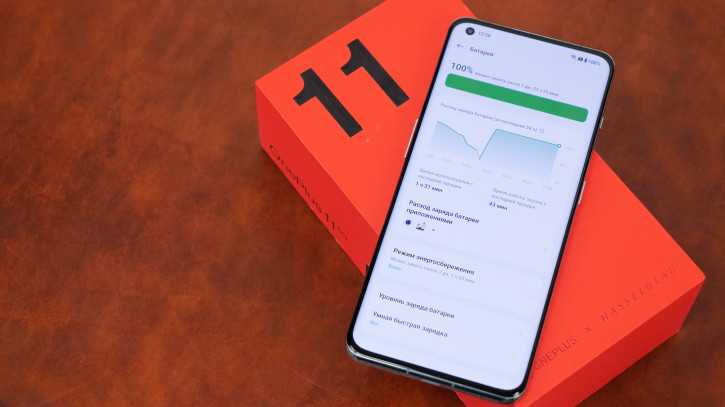
Скорость зарядки, как вы знаете, у OnePlus 11 почему-то зависит от номинального напряжения сети. Но если вы живёте не в Северной Америке, Колумбии, Венесуэле, Суринаме, Эквадоре, Японии или Китайской Республике, то у вас около 220 В, и зарядка молотит на полные 100 Вт. В таком режиме у нас получился полный заряд (с 2%) за 24 минуты, причём наполовину телефон зарядился за 10 минут, а на 90% – за 20 минут. Отличный результат! Беспроводной зарядки почему-то нет, хотя в OnePlus 9 она была.
Камеры
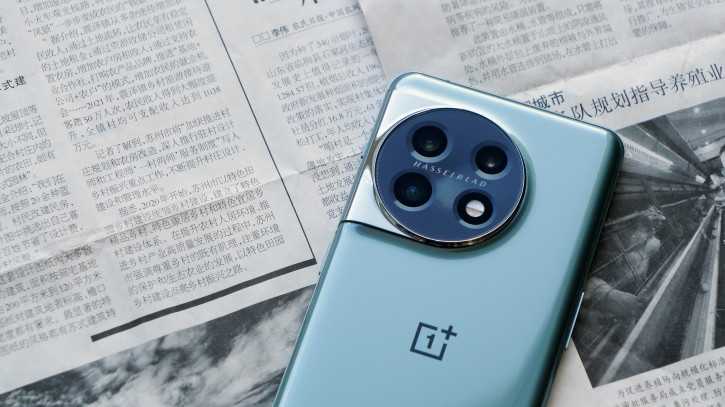
OnePlus 11 получил основную камеру из трёх объективов, и в каждом спрятан сенсор от Sony. Основа – 50-Мп сенсор IMX890, то есть слегка улучшенная версия легендарного IMX766. Есть OIS, и ещё есть ощущение, что что-то пошло не так, потому что IMX890 значительно меньше по размерам, чем IMX789, стоявший в OnePlus 9/10 Pro (1/1,56″ против 1/1,43″). Широкоугольная камера с автофокусом использует 1/2″ 48-Мп сенсор IMX581 – спецверсию легендарного IMX586 (первая 48-Мп камера в смартфонах). Наконец, двукратным телевиком работает 1/2,74″ сенсор IMX709 с разрешением 32 Мп, обычно использующийся во фронтальных камерах. Смотрим примеры фото:








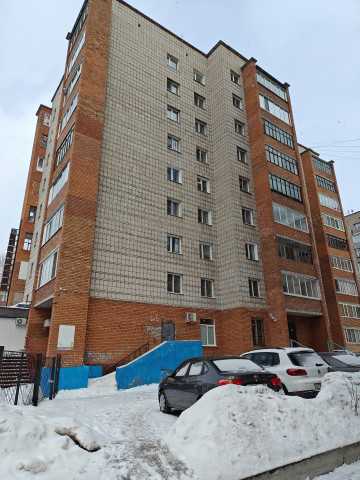

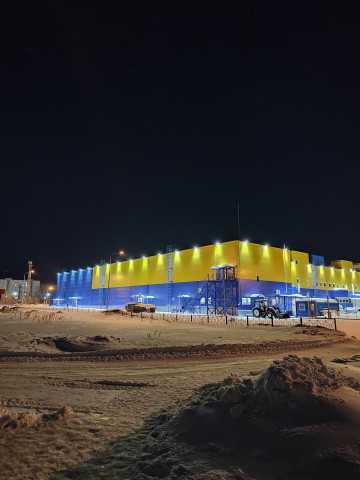
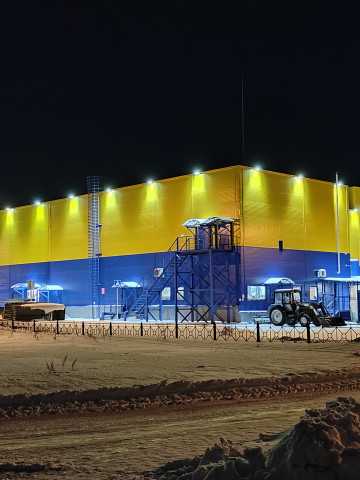



















Хорошая и универсальная, но не топовая камера. То экспозицию выкрутит (особенно в ночных сюжетах), то автофокус промажет, то с балансом белого завернёт не туда. Но в целом – результаты достойные. И основная камера, и ширик делают приятные фотографии в самых разных условиях, телевик при достаточном освещении тоже своё дело делает (а при недостаточном OnePlus 11 целиком полагается на цифровой зум). Автофокус в ширике позволяет снимать классные макроснимки, причём OnePlus даже реализовала автопереключение модулей. Если вы не большой ценитель мобильной фотографии и если вам не нужен дальнобойный зум, то OnePlus 11 ваши потребности закроет.


Фронтальная камера, в отличие от всех задних, использует сенсор Samsung — тот, что с красивым названием S5K3P9. Селфи получаются неплохие даже в условиях ночного освещения. Правда, из-за положения модуля вы всегда будете смотреть куда-то вбок.
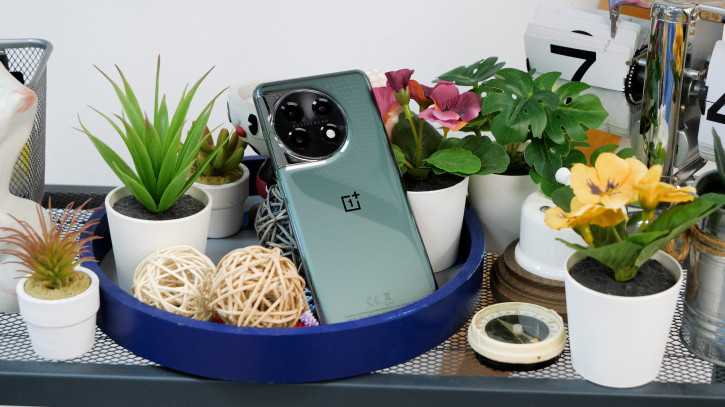
Видео можно писать на все четыре камеры, но с разными ограничениями по разрешению: 8K@24fps или 4K@60fps на основную камеру, 4K@30fps или FHD@60fps на ширик и только FHD@30fps на телевик и камеру селфи. Между задними камерами можно переключаться по ходу съёмки. Качество видео — достаточно хорошее, если не брать в расчёт телевик, который почти бесполезен. Ну зачем вам 2х зум в 1080p, если у вас есть 4K и даже 8K на основу?
iQOO 11 vs OnePlus 11 vs Samsung Galaxy S23 Ultra vs Xiaomi 13 Pro: Design
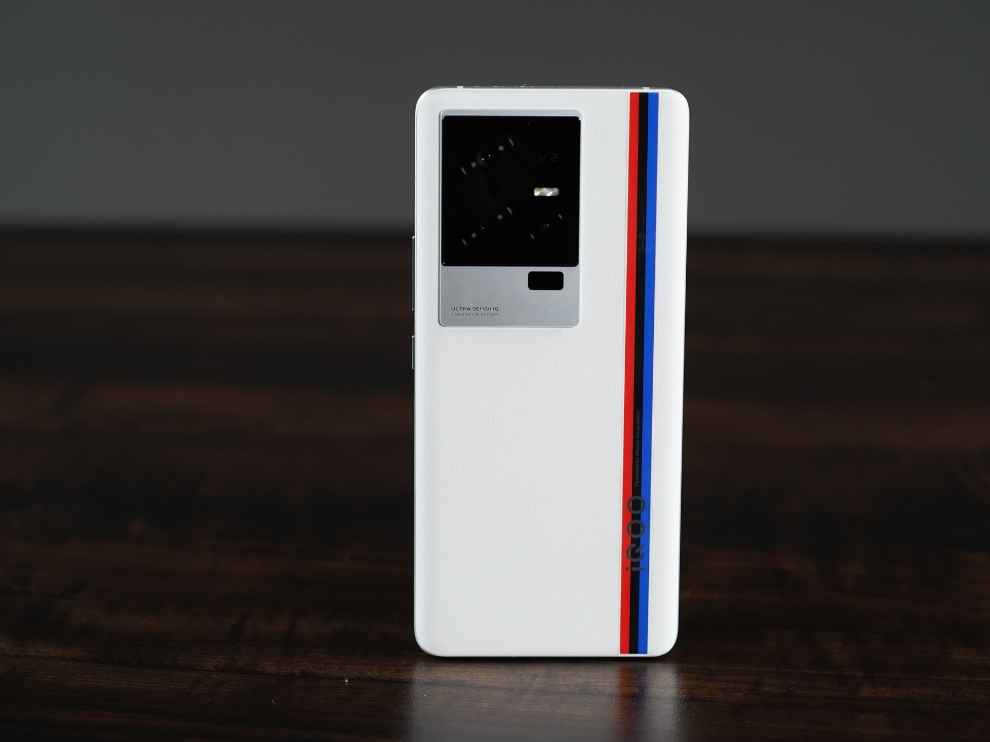
Starting with the design, all four Android flagships of 2023 have their own distinctive features. While the iQOO 11 comes with the BMW M Motorsport-inspired racing stripes design with the faux leather back panel, the Samsung Galaxy S23 Ultra has its now-iconic form factor which looks pretty much the same as its predecessor. The OnePlus 11 has a new round camera module implementation, and the Xiaomi 13 Pro introduces a new design language for the Xiaomi flagship series.
The iQOO 11 has arguably the least dramatic design. There is a flat hole-punch screen up front, and a faux leather back panel, with BMW M Motorsport racing stripes. These blue and red racing stripes have a glossy finish, and to add to the detail, you can see a carbon-fibre-like pattern inside the racing stripes upon looking closely. Very cool attention to detail. The rectangular camera cutout is placed in the top-left corner, which also has a two-tone colour scheme with both grey and black panels. The top and bottom of the aluminium frame are flat, which allows users to make the smartphone stand on any flat surface.
Overall, I like the subtle design. While there are a couple of rough edges here and there like the screen not merging into the frame as seamlessly as its competition, the iQOO 11 is still beautiful. I love the premium in-hand feel that comes with the faux leather back panel, and the smartphone is also one of the lightest among the four, making it easy to hold and carry.
Coming to the Samsung Galaxy S23 Ultra, the Samsung flagship has a very similar design to its predecessor. With pretty much the same looks as the Samsung Galaxy S22 Ultra, the Galaxy S23 Ultra’s design change is more than meets the eye. With this year’s flagship, Samsung has made changes where it matters. The Galaxy S23 Ultra’s edges are flatter now, along with the flat frame on the left and the right sides, similar to what we had seen on Samsung Galaxy Note devices before their demise. The curved display implementation is also slightly different this time around.
Now, while the design change is minor, the impact it makes is not. The Samsung Galaxy S23 Ultra is now easier to hold in your hands and the grip has improved. Given the sheer size of the S23 Ultra, this is a welcome change. The smartphone is still a bit too big for many users and the weight may also make things uncomfortable for many users.
With the OnePlus 11, we are witnessing a new design language from the brand. The OnePlus 11 has one of the more compact form factors among the four competing devices. We see a new round camera module with four cutouts for the cameras and the flash. The in-hand feel of the OnePlus 11 is proper OnePlus. The sandstone finish, and the alert slider, all of it is very familiar with OnePlus, but we get it in a new shape now. The round camera module is something that may not have many takers, but the OnePlus 11 looks and feels like a proper OnePlus flagship.
The Xiaomi 13 Pro, which is the latest flagship from the Chinese OEM, also introduces a new design language. The Xiaomi 13 Pro has a curved display up front, with a hole-punch cutout in the middle. At the back, the smartphone has a square camera module, with a Leica-powered triple camera setup. Xiaomi has given a ceramic back panel on the 13 Pro, which looks and feels super premium. In white, especially, the black camera module gives the smartphone a ‘Panda’-like colour scheme.
The size of the Xiaomi 13 Pro is also the best among the four competitors. It is handy, compact, and easily usable with a single hand. The one issue with the design, however, is the camera module’s thickness. This is probably the thickest camera module on any smartphone, and the Xiaomi 13 Pro slants when placed on a flat surface. The camera module also interrupts while playing games or watching videos. Furthermore, the Xiaomi 13 Pro is heavy. You may not feel the weight initially, but with prolonged usage, things get quite uncomfortable.
Also read: iQOO 11 vs OnePlus 11 comparison: Specifications, price and features
Xiaomi has partnered with Leica for the camera
If you check out the specs of the camera on each phone, they look very similar. They both use a triple-camera setup, with a 50MP main sensor. However, the Xiaomi 13 also has a 10MP telephoto camera and a 12MP ultra-wide camera, all of which have been developed through a partnership with Leica.
Meanwhile, the OnePlus 11 has a 32MP telephoto camera, and a 48MP ultrawide camera. With the higher figures, you may assume that the OnePlus has the better camera – but it’s never as simple as that. Interestingly, Xiaomi has a higher-specced selfie camera at 32MP, compared to the 16MP of the OnePlus 11.
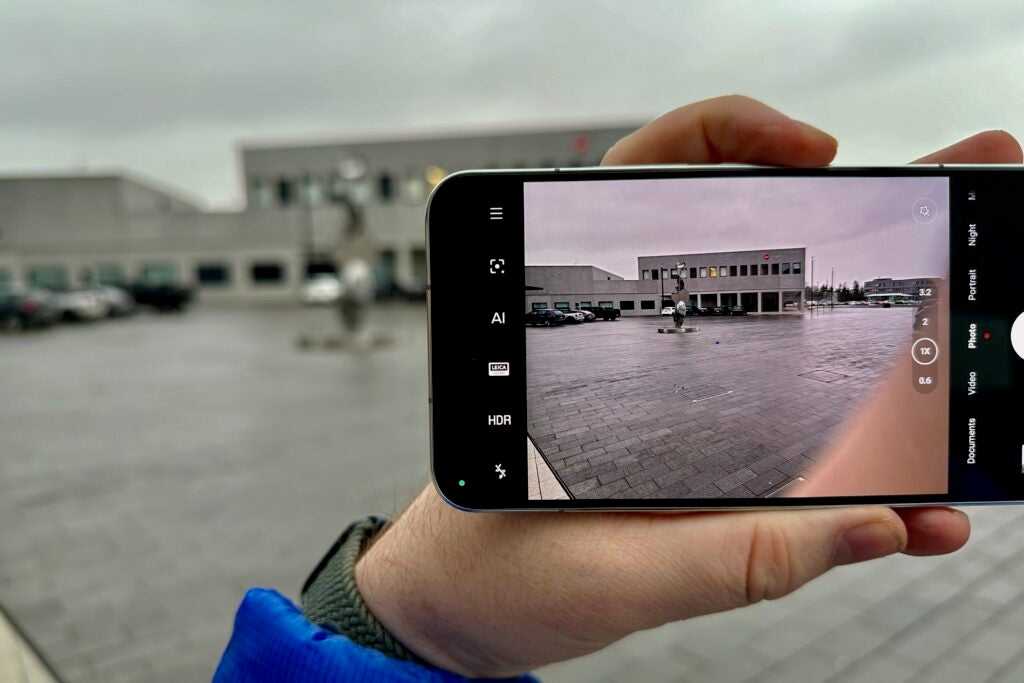
Xiaomi 13 – Image Credit (Trusted Reviews)
We’ll need to spend more time with the Xiaomi 13 to know whether Leica’s triple-capera setup is better (or worse) than the OnePlus 11, but our initial testing suggests there won’t be a huge difference between the two. That’s the same with video recording too, with both phones capable of up to 8K at 24fps and 4K at 60fps.
Какой китайский «люксовый» смартфон лучше: Xiaomi 12 Pro или OnePlus 10 Pro
Ведущий канала Quke.ru на YouTube сравнил несколько самых мощных на сегодняшний день смартфонов из Китая: OnePlus 10 Pro и Xiaomi 12 Pro.
Эксперт YouTube-канала Quke.ru рассказал о достоинствах и недостатках топовых Xiaomi 12 Pro и OnePlus 10 Pro.
У Xiaomi корпус глянцевый, в то время как у OnePlus он матовый. С лицевой же стороны аппараты очень похожи. Одинаковые у них даже диагонали экрана (6,7 дюйма), а также остальные характеристики дисплеев: матрица AMOLED E4, разрешение 4К, частота обновления 120 Гц.
Оба устройства также оснащены одинаковыми процессорами. Это Snapdragon 8 Gen 1 (объём ОЗУ — 8 или 12 ГБ). Однако в тесте AnTuTu OnePlus набирает только 821 тысячу баллов, а Xiaomi — почти миллион (944 тысячи баллов). Также 12 Pro нагревается очень сильно при нагрузке (настолько, что его становится невозможно держать в руках), а вот с охлаждением OnePlus 10 Pro ситуация гораздо лучше. В плане производительности устройства показывают себя одинаково хорошо. Но более стабильным всё же оказался OnePlus, подчёркивает ведущий.
Ёмкость аккумулятора у Xiaomi составляет 4600 мАч, у OnePlus — 5000 мАч. Также мощность зарядки у первого равняется 120 Вт, у второго — 80 Вт. Работает OnePlus тоже немного дольше по сравнению с Xiaomi 12 Pro. К концу тестового дня на OnePlus 10 Pro осталось примерно 20 процентов заряда, а на Xiaomi 12 Pro — 8 процентов. Заряжается полностью Xiaomi в течение 23 минут, а у OnePlus уходит на это на 8-9 минут больше.
Фронтальные камеры имеют разрешение в том и в другом случае 32 МП. Разницы между ними нет практически никакой.
Each powered by the identical processor
Those that worth efficiency above all the pieces else shouldn’t have any considerations right here, as each the OnePlus 11 and Xiaomi 13 are powered by Qualcomm’s newest and best chip: the Snapdragon 8 Gen 2 Cell.
That ought to imply you’ll get speedy efficiency for any intensive workloads, whether or not that’s taking part in Name of Responsibility Cell or enhancing images on the fly.
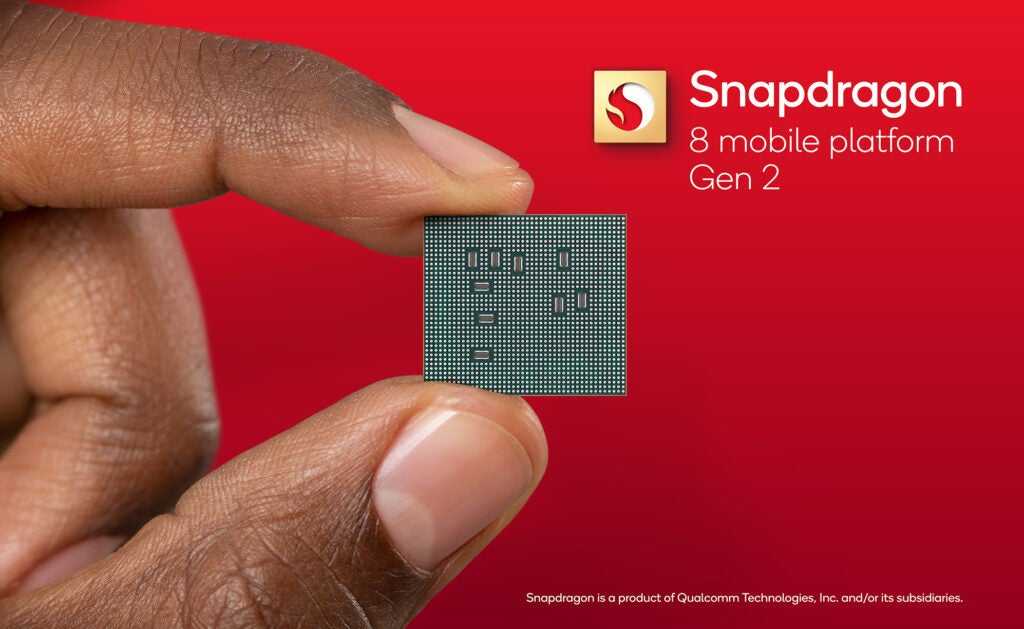
Having matching chips doesn’t essentially imply efficiency shall be equivalent although, with the likes of RAM and thermals having a serious influence. We have been impressed with how cool the Xiaomi 13 remained in titles like Genshin Influence, however we nonetheless have to run some benchmarks to see the way it fares towards the OnePlus 11.
Cameras
- Xiaomi: 50.3MP primary — 1.0-inch type sensor — f/1.9 — Laser AF — OIS — PDAF
- OnePlus: 50MP primary — 1/1.56-inch sensor — f/1.8 — OIS — PDAF
- Xiaomi: 50MP f/2.0 telephoto 3.2x optical zoom — 50MP f/2.2 ultrawide
- OnePlus: 32MP f/2.0 telephoto 2x optical zoom — 48MP f/2.2 ultrawide
Both of the phones have a triple camera system, made up of a primary, ultrawide and zoom. And the first thing we noticed is that the zoom on the Xiaomi is more capable. Its 3.2x floating zoom lens combines with the higher resolution sensor offer up to 70x zoom, where the OnePlus goes up to 20x. Of course, on both phones, once you get to those extremities, the quality of the image is quite poor, looking more like a watercolour painting than a photo. However, the quality falls off much sooner on the OnePlus.
As for overall image qualities, regardless of which lenses we were comparing, in most conditions, OnePlus’ results had a more artificial feel to them. Caused primarily by that over-sharpening in the processing that gives pictures a contrasty edge, delivering unnatural textures and colours at times, particularly in the shadows.
Xiaomi on the other hand seems to do a better job of making details and textures look more real. The other thing we like is that it offers two different image styles or colour profiles to choose from, both created with Leica. There’s an authentic mode and a vibrant mode, with the former being a bit more muted and natural, and the latter offering slightly more saturation and contrast. Although, never to the point where it gets extreme. Still, we often found shadows a little too dark from the Xiaomi.
If you’re wanting a phone that’s good for close-up and macro shots, the Xiaomi is the better phone here. If only because when it automatically switches to macro, it focuses quickly and easily, and is more reliable. The OnePlus would often switch between macro and not macro, jumping between two lenses, and even on the right lens it’d sometimes struggle to focus. It’s not impossible to get it working, it’s just slower and less consistent than the Xiaomi.
In our testing at night, with the phone set to night mode, the Xiaomi was fantastic when using the primary sensor. Its larger size and bigger pixels combine to offer far better light capture than the OnePlus, and delivered pictures with a lot less noise. However, it didn’t seem to process images with the same level of light lifted from the darker parts of the image from the ultrawide and telephoto, sometimes to the point where it may as well not have a night mode at all on the second and third lenses.
However, it is hiding a bit of a trick up its sleeve: Supermoon mode. Using the zoom lens, you can point it at the moon, zoom between 5x and 60x, and it’ll automatically process the image and make the moon look sharp and detailed. Not just a glowing, blown-out orb in the sky. It also has a really neat portrait mode, delivering four unique effects which change colours, sharpness and depth to offer different styles, including one really effective black-and-white mode.
In the end — in most instances — we liked the results that came from the Xiaomi more than the OnePlus.
Средняя цена
В среднем сегменте представлены смартфоны со сбалансированными техническими характеристиками, достаточными, чтобы решать продвинутые задачи, например, полноценно играть в игры, просматривать контент в лучшем качестве.
vivo Y53s – стильный, без лишнего пафоса
Усовершенствованная версия бестселлера 2021 года Vivo Y31. Телефон получил более современное соотношение IPS-экрана диагональю 6,58 дюйма с небольшим вырезом под фронтальную камеру, компактный корпус, новую аппаратную платформу Mediatek Helio G80, улучшенное сочетание камер.
В vivo Y53s установлена батарея на 5000 мАч. Этого хватит, чтобы питать достаточно большой экран, производительный процессор в течение целого дня, не выбирая сценарий использования. При непрерывном просмотре видео экран разрядится через 12часов. Зарядка мощностью 33 Вт подключается через коммуникационный порт, восполняет ёмкость менее, чем за 2 часа.
Преимущества:
- FHD+-экран с неплохими показателями;
- игровой процессор;
- стабильная работа операционной системы;
- 8 Гб оперативной памяти;
- основная камера на 64 Мп;
- мини-джек и Bluetooth с поддержкой профилей aptX и LDAC;
- выделенный слот для карты памяти.
Недостатки:
- частота обновления экрана 60 Гц;
- отсутствие широкоугольной камеры;
- посредственная съёмка видео.
TCL 20L+ – достоин внимания
Среднебюджетник от производителя второго эшелона, который пытается закрепиться на рынке, предлагая сбалансированную модель по хорошей цене. Это крупный тяжелый смартфон с большим экраном. При этом телефон выглядит элегантно, не скользит в руках, на задней крышке практически не остается отпечатков пальцев.
TCL 20L+ оснащён экраном на 6,67 дюйма. Это IPS-матрица с FHD+-разрешением, плотностью точек 395 ppi. Фронтальная камера интегрирована по центру экрана. Благодаря технологии TÜV Rheinland экран отлично передаёт изображение, сохраняя реалистичность цветов.
У TCL 20L+, как у типичного среднебюджетника, сзади установили основную и широкоугольную камеры, которые дополнены оптикой глубины и макросъёмки. Фотографии в целом яркие, сочные, но с не совсем естественной цветопередачей.
Смартфон комплектуется несъёмным аккумулятором с увеличенной ёмкостью. Показатель автономности в 5000 мАч не рекордный, но достаточный, чтобы обойтись без ежедневной ночной зарядки.
Преимущества:
- добротная сборка;
- сочный экран;
- качество фото;
- простой, понятный интерфейс.
Недостатки:
- в комплекте нет плёнки на экран;
- трудно найти чехол;
- сырая прошивка.
Xiaomi Redmi Note 10 Pro – AMOLED с развёрткой 120 Гц
Прошлогодний флагман, чья начинка до сих пор актуальна. Смартфон предлагает премиальный экран, поддерживающий развёртку 120 Гц и пиковую яркость в 1200 нит. Xiaomi Redmi Note 10 Pro функционирует на платформе Qualcomm Snapdragon 732G, сочетающей игровую производительность и энергоэффективность, включая использование Dual Native ISO, что обеспечивает снимки флагманского уровня.
Xiaomi Redmi Note 10 Pro комплектуется АКБ на 5000 мАч. Этого достаточно, чтобы не переживать о зарядке в течение дня. В комплекте зарядка на 22 Вт.
Преимущества:
- премиальный корпус из калёного стекла Corning Gorilla Glass 5;
- стереодинамики;
- аккумулятор ёмкостью 5000 мАч;
- функция Always On;
- быстрая зарядка на 33 Вт;
- FHD+-экран.
Недостатки:
- блок камер выпирает из корпуса, что приводит к появлению царапин;
- плохая работа датчика приближения.
Дуэль в фотографии высокого уровня
И Xiaomi с его улучшениями в камере и обработке изображений, а также OnePlus с интеграцией и сотрудничеством бренда Hasselblad сделали большой шаг вперед, когда дело доходит до камер. У них есть две тройные камеры, но с большой универсальностью, которая начинается с основного объектива, в котором OnePlus 9 имеет 48 Mpx в руках признанных Sony Датчик IMX 689 который должен конкурировать с 108 мегапикселей Xiaomi Mi 11 до того, как эти результаты будут оспорены.
Вторая из камер — это широкоугольная, которая с 50 мегапикселями у OnePlus и 13 мегапикселями у Xiaomi снова дает серьезное сходство. Третья линза может использоваться по-разному, со стороны OnePlus она предназначена для улучшения портрета с 2 мегапикселями, а у Xiaomi есть 5 мегапикселей для режима макросъемки. Селфи-камеры не отстают, и мы добились хороших результатов даже в сложных ситуациях, OnePlus с 16 Mpx и Xiaomi с 20 Mpx.
В видео запись, Xiaomi складывает и выигрывает у OnePlus 9 за счет интеграции оптического стабилизатора изображения, который позволит достичь гораздо лучших результатов, но также важно увидеть его возможности:
OnePlus 9:
- 8K при 30 кадрах в секунду
- 4K при 30/60 кадров в секунду
- 1080p при 30/60 кадрах в секунду
- Замедленное видео: 480 кадров в секунду
Xiaomi Mi 11:
- 8K при 30 кадрах в секунду
- 4K при 30/60 кадров в секунду
- 1080p при 30/60 кадрах в секунду
- Замедленная запись: 480 кадров в секунду



























